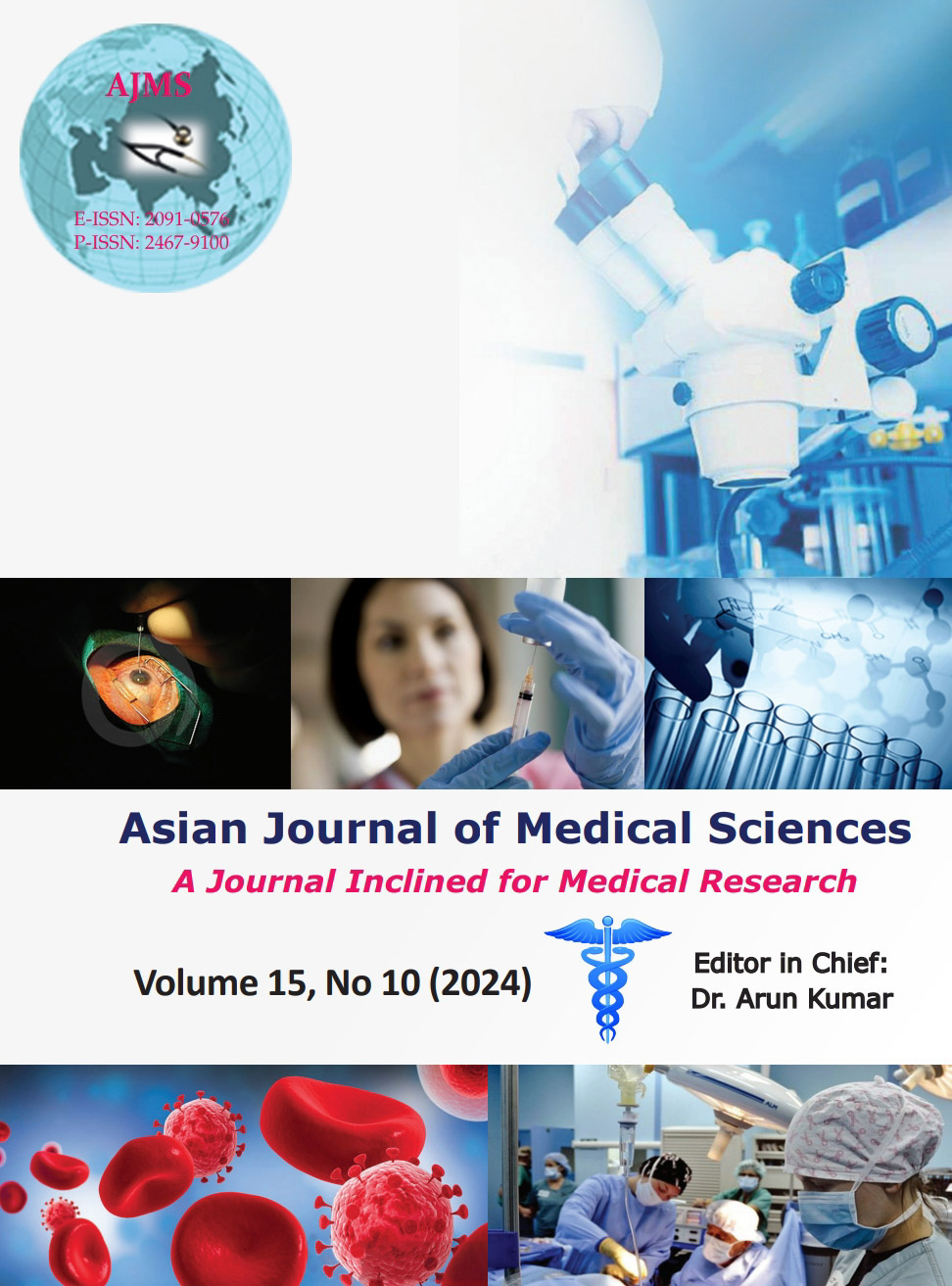Detection of antibiogram pattern and prevalence of blaNDM and blaVIM genes among carbapenem resistant Eschericia coli isolates in a tertiary care hospital
Keywords:
Eschericia coli; blaNDM, blaVIM; Carbapenem resistant; Multi-drug resistantAbstract
Background: Clinical significance of Eschericia coli is due to its capacity to develop resistance against many antibiotics specially carbapenem by producing carbapenemase which limits treatment options. blaNDM and blaVIM genes are responsible for this multi-drug-resistance. This is an alarming condition for society as well as clinician because they are very difficult to treat due to limited options of antibiotics and its high virulence.
Aims and Objectives: The study was conducted to detect antibiogram pattern and prevalence of blaNDM and blaVIM genes among carbapenem resistant E. coli isolates in a tertiary care hospital. Our study will also help to identify molecular basis of Carbapenem resistance including treatment guideline.
Materials and Methods: Cross-sectional study was performed during January’2021 to June’2022 time period. Identification of E. coli was followed by standard protocol and antibiotic sensitivity was done by Kirby-Bauer disk-diffusion method following CLSI guideline, using VITEK-2D-SYSTEM. Detection of genes was done by polymerase chain reaction (PCR).
Results: Out of 1867 samples, 161 isolates were identified as E. coli, among which 90 were resistant to carbapenem. Among those, 50 (31%) were resistant to all three carbapenems. Among those, 100% were resistant to ampicillin, amoxycillin-clavulanic acid, cefuroxime, cefuroxime-axetil, cefoperazone-sulbactam, ceftriaxone, cefepime, piperacillin-tazobactam, nalidixic acid, ciprofloxacin; 52% were resistant to amikacin; 54% were resistant to gentamicin; 86% were resistant to cotrimoxazole; 22% were resistant to nitrofurantoin and 96% were sensitive to tigecycline; 100% were intermediate sensitive to colistin. blaNDM gene is detected in 17 (34%) isolates and blaVIM gene is detected in 2 (4%) isolates by PCR.
Conclusion: E. coli leads to common clinical presentations such as urinary tract infection, blood stream infection, pneumonia, and wound infection. High burden of carbapenem resistant E. coli was associated with urinary indoor samples. Rising incidence of multi-drug-resistance occurs due to lack of infection control measures, irrational use of antibiotics. Continuous surveillance will prevent development of multi-drug-resistance and help to improve treatment guideline.
Downloads
Downloads
Published
How to Cite
Issue
Section
License
Copyright (c) 2024 Asian Journal of Medical Sciences

This work is licensed under a Creative Commons Attribution-NonCommercial 4.0 International License.
Authors who publish with this journal agree to the following terms:
- The journal holds copyright and publishes the work under a Creative Commons CC-BY-NC license that permits use, distribution and reprduction in any medium, provided the original work is properly cited and is not used for commercial purposes. The journal should be recognised as the original publisher of this work.
- Authors are able to enter into separate, additional contractual arrangements for the non-exclusive distribution of the journal's published version of the work (e.g., post it to an institutional repository or publish it in a book), with an acknowledgement of its initial publication in this journal.
- Authors are permitted and encouraged to post their work online (e.g., in institutional repositories or on their website) prior to and during the submission process, as it can lead to productive exchanges, as well as earlier and greater citation of published work (See The Effect of Open Access).




